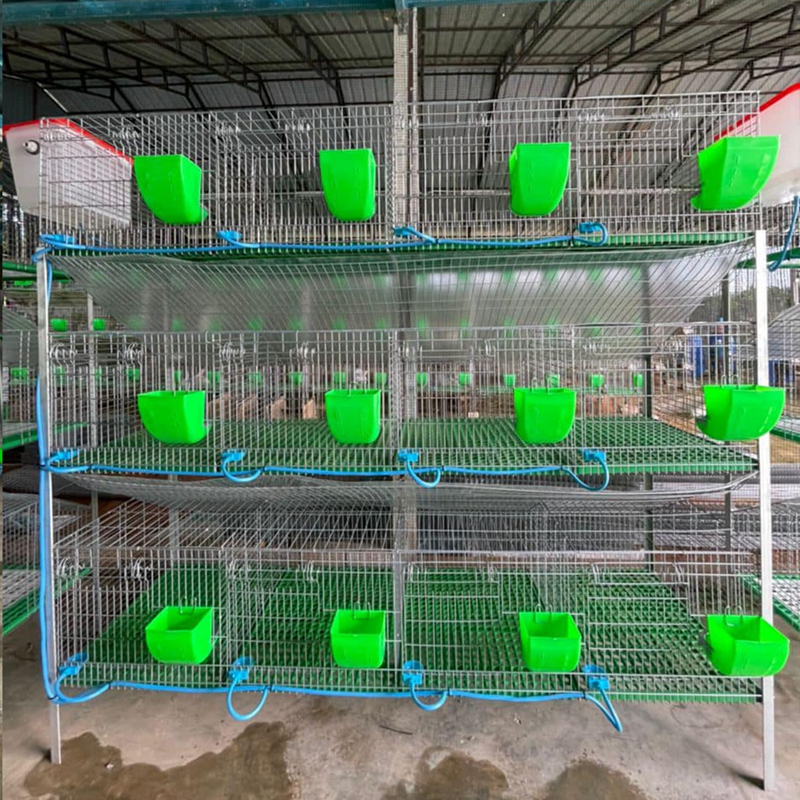Innovative Pig Housing Solutions for Modern Farming Practices
Aug . 20, 2024 21:54 Back to list
Innovative Pig Housing Solutions for Modern Farming Practices
The Modern Pig Pen Advancements in Sustainable Farming
The agricultural landscape has undergone significant transformations over the past few decades, particularly concerning livestock farming. Among these transformations, the design and management of pig pens have evolved remarkably, focusing on sustainability, animal welfare, and efficiency. The modern pig pen is a testament to these advancements, reflecting a shift towards more humane and productive farming practices.
Historically, pig pens were often cramped, unsanitary, and lacked the necessary amenities for both the animals and the farmers. In stark contrast, the modern pig pen is designed with the well-being of the pigs in mind. These facilities are spacious enough to allow pigs to move freely, promoting natural behaviors essential for their physical and mental health. An ideal modern pig pen often consists of individual pens for sows, group housing for breeding, and designated areas for feeding and resting.
One of the foundational principles of modern pig pen design is the integration of technology to monitor the health and welfare of the animals
. Smart sensors are frequently employed to track the pigs' activity levels, detect signs of illness, and ensure optimal environmental conditions. For instance, temperature and humidity sensors can provide real-time data that helps farmers maintain a comfortable environment for the pigs, reducing stress and promoting growth. This proactive approach minimizes the need for antibiotics and other veterinary interventions, leading to healthier livestock and safer food products.Moreover, modern pig pens are designed with sustainability in mind. Traditional farming practices often led to significant waste management challenges, contributing to environmental degradation. However, contemporary pig farming incorporates innovative waste management systems that recycle pig manure into valuable resources. For example, anaerobic digestion systems can convert pig waste into biogas, providing a renewable energy source for the farm and reducing greenhouse gas emissions. Additionally, the byproducts can be used as organic fertilizers, promoting sustainable crop production.
modern pig pen

Another hallmark of the modern pig pen is its focus on biosecurity. With livestock diseases posing severe threats to both animal and human health, modern pens are designed to minimize risks. Effective biosecurity measures include controlled access points, regular sanitation protocols, and isolation areas for sick animals. These precautions help to prevent the proliferation of diseases and ensure a secure environment for both the pigs and the farm workers.
Animal welfare is also a critical consideration in the design and operation of modern pig pens. Research shows that pigs experience stress when confined in small spaces or subjected to harsh conditions. Thus, modern pens are typically equipped with enrichment tools such as toys, rooting materials, and social opportunities to encourage natural behaviors. This not only enhances the pigs' quality of life but also leads to better meat quality and increased productivity, ultimately benefiting farmers economically.
Collaboration among farmers, researchers, and policymakers has also played a vital role in the evolution of pig pen designs. Education and training programs focusing on best practices for pig farming have emerged, guiding farmers in adopting modern techniques that enhance both animal welfare and operational efficiency. Communities around the world are beginning to recognize the importance of conscious farming practices, leading to increased demand for sustainably sourced pork.
In conclusion, the modern pig pen represents a significant leap forward in agricultural practices, combining technology, sustainability, and animal welfare. As the global population continues to grow, the demand for meat products will inevitably rise, making it imperative for farmers to adopt innovative methods. With a focus on responsible practices, the modern pig pen not only benefits pigs but also supports the health of our planet and society as a whole. By embracing these advancements, we can look forward to a more sustainable and ethical future in livestock farming.
-
Hot Sale 24 & 18 Door Rabbit Cages - Premium Breeding Solutions
NewsJul.25,2025
-
Automatic Feeding Line System Pan Feeder Nipple Drinker - Anping County Yize Metal Products Co., Ltd.
NewsJul.21,2025
-
Automatic Feeding Line System Pan Feeder Nipple Drinker - Anping County Yize Metal Products Co., Ltd.
NewsJul.21,2025
-
Automatic Feeding Line System - Anping Yize | Precision & Nipple
NewsJul.21,2025
-
Automatic Feeding Line System - Anping Yize | Precision & Nipple
NewsJul.21,2025
-
Automatic Feeding Line System-Anping County Yize Metal Products Co., Ltd.|Efficient Feed Distribution&Customized Animal Farming Solutions
NewsJul.21,2025






